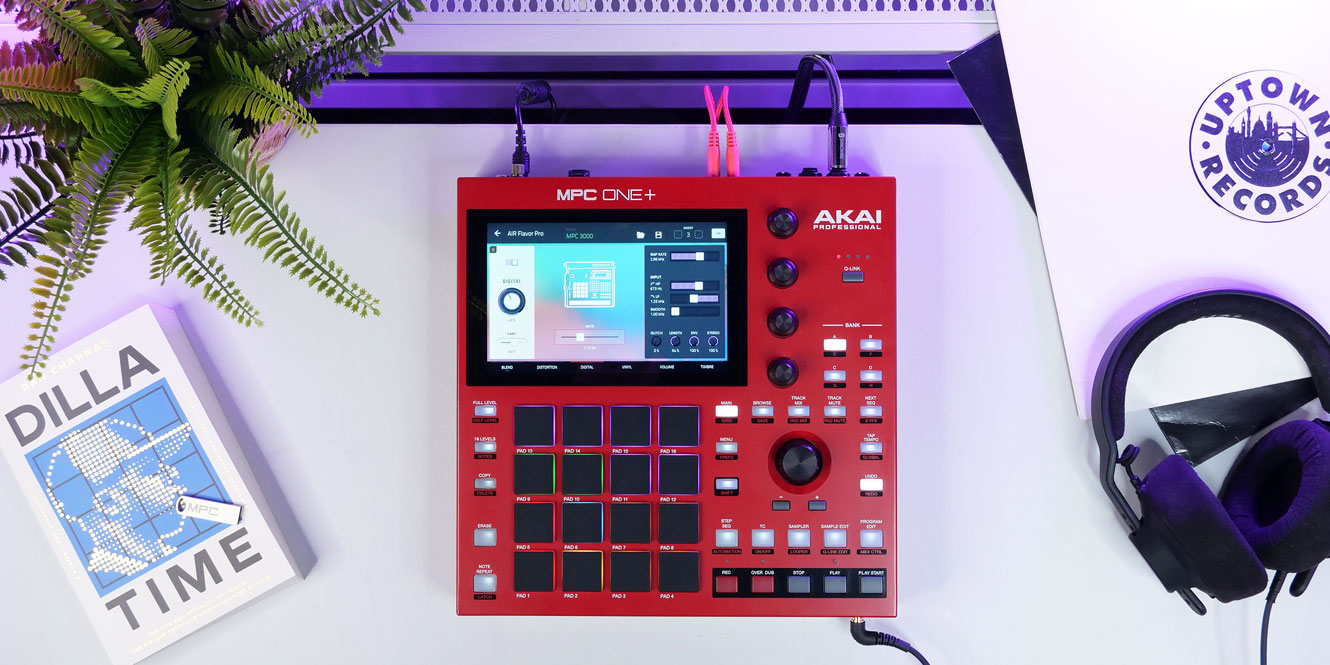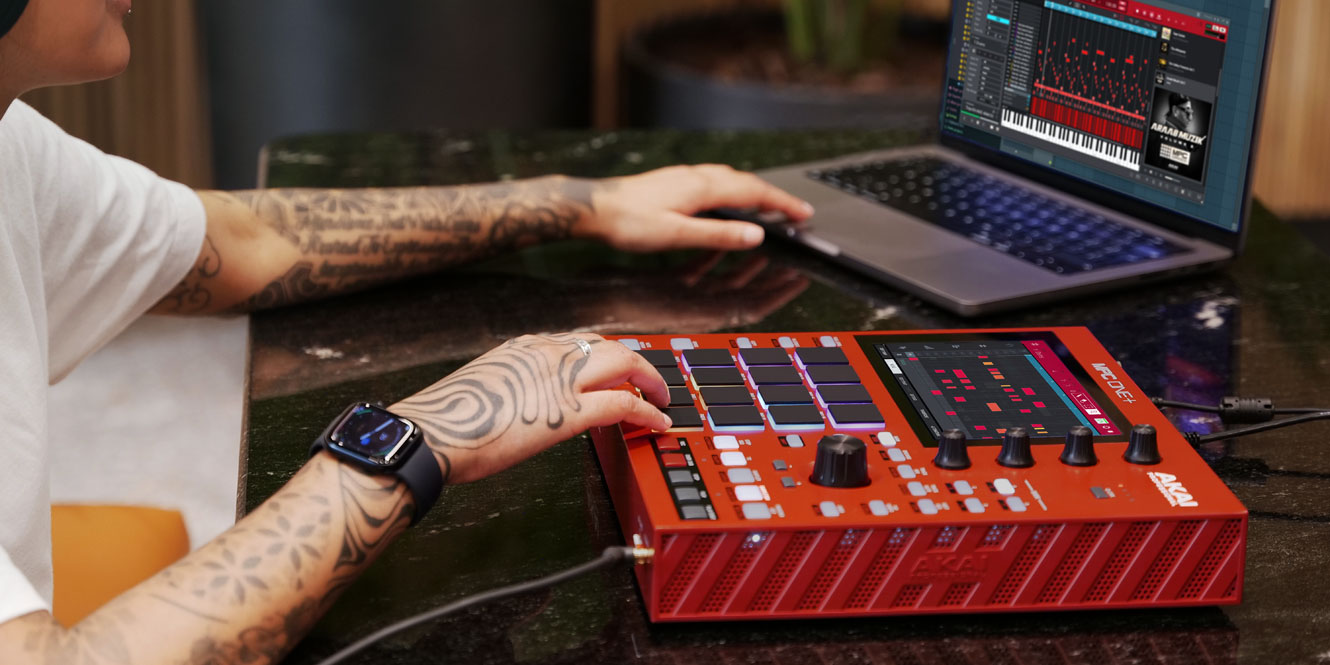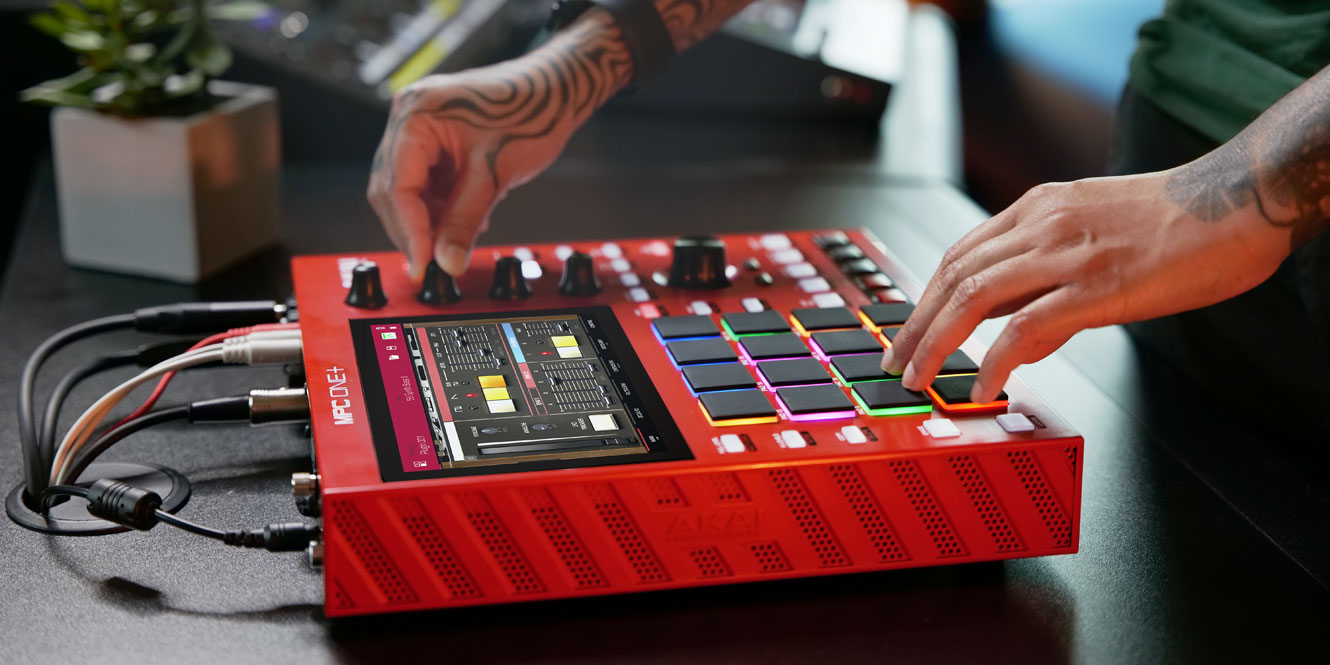Akai have announced the new MPC One Plus, expanding on the modern MPC One and making it even more powerful. But what’s new with this version, and how will this affect your production?

The history of the MPC
Akai’s MPC series started out as a collaboration between Japanese electronics company Akai and famed engineer Roger Linn, having designed the LinnDrum and LM-1, which defined the sounds of the ’80s.
After an unsuccessful attempt at launching a drum machine and sampler hybrid called the Linn 9000, he and Akai began working together to “re-engineer” the concept behind the 9000 into something brand new. This would become the MPC60, which was released in December 1988.
Ever since, Akai have used the MPC framework to create new products, like the MPC2000 XL, which really helped the MPC series find a new audience at the turn of the millennium.
The acronym MPC stands for “MIDI Production Centre”, and these products quickly came to define a production for a range of electronic music, especially hip-hop instrumentals. A fast, intuitive workflow, with an easy-to-follow interface, significant sampling power for the time, and accessibility meant that the MPC range became extremely popular.
The modern MPCs
After establishing the range over decades, Akai expanded the MPC series by delving into computer software with MIDI controller options. They also rolled out a new generation of modern, standalone MPC devices in the form of the MPC Live II, the MPC X, and the synthesizer workstation MPC Key 61.
Who uses MPCs?
Notable users of the MPC range include DJ Shadow, J Dilla, MF DOOM, Mark Ronson, Pete Rock, RJD2, Kanye West, and even John Mayer. The MPC samplers have been absolutely instrumental in the wave of modern accessibility to music and music production hardware we’ve seen in recent years.

What’s new with the MPC One Plus?
Firstly, the MPC One Plus has expanded storage capacity, giving you far more options for onboard samples, Akai plugins to purchase and install, and projects to store on the unit. Expanded from a total of 4GB with 2GB dedicated to the factory content, the MPC One Plus provides 16GB, with 7.6GB of user storage and 2GB of factory content.
In addition to the flexibility offered by improved storage capacity, this new edition has the same powerful connectivity options as the original MPC One, with the addition of Bluetooth and Wi-Fi connectivity. This Wi-Fi connectivity allows you to use Ableton Link 3 for seamless DAW integration with Ableton Live, expanding on the Bluetooth MIDI from the original model.
In case that wasn’t enough value for you, every purchase of the MPC One Plus gives you a voucher for a free download of an MPC plugin of your choosing, from the classic bass and lead sounds of the vintage Mini Model D, the spacey pads of the Jura, or the old-school tape sampling of the Mellotron, or the modern sounds of Hype, you can take your pick of an additional instrument to bolster the MPC’s expansive sound palette.
The MPC One Plus also sports a new red livery that celebrates the iconic look of Akai’s logo, making it a sleek and stylish standout for your studio!














0 Comments